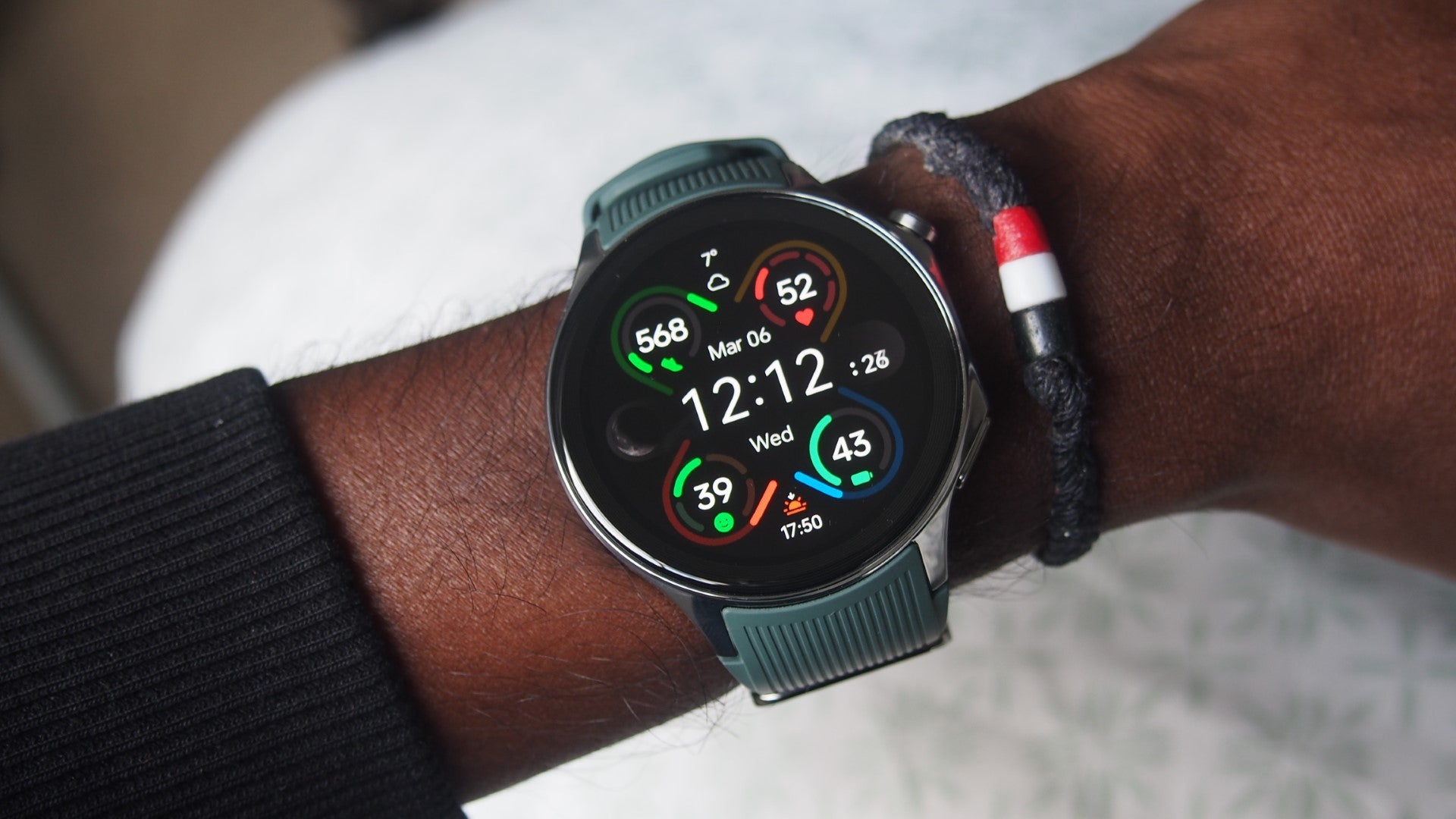Poco Watch Review
A likeable affordable smartwatch
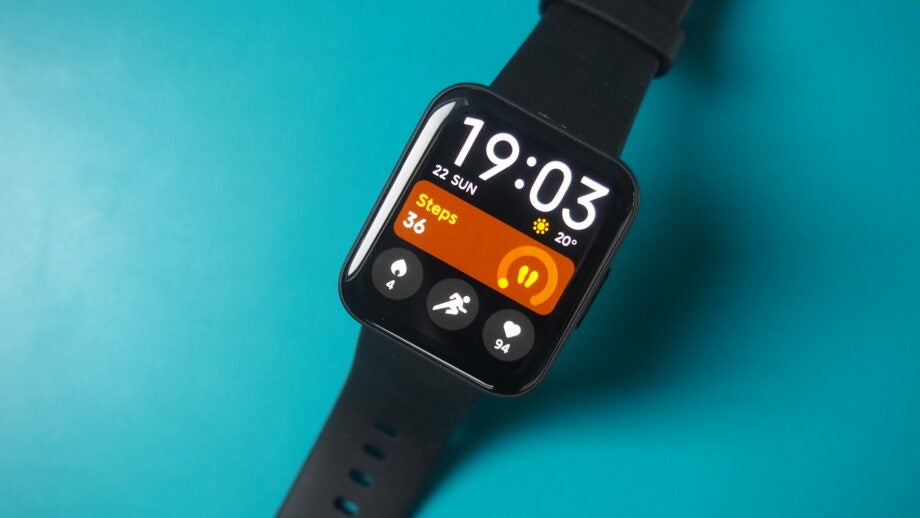

Verdict
The Poco Watch isn’t a poor smartwatch debut from Poco, if it is to come in well below the £100 price point. It’s basically a clone of Xiaomi and Redmi’s square smartwatches but with a better screen. It doesn’t deliver the richest smartwatch experience, nor is it an impeccable health and fitness tracker. However, there’s definitely more good here than bad to make it worthy of consideration.
Pros
- Great screen for the price
- Easy to use software
- Offers good fitness and sleep tracking
Cons
- Battery life drops when all features in use
- Design may be too dainty for some
- Heart rate accuracy not great
Availability
- UKTBC
- USATBC
- EuropeRRP: €79
- CanadaTBC
- AustraliaTBC
Key Features
- Great for tracking movement100+ sports tracking modes
- Battery LifeUp to 14 days’ endurance
- SensorsBuilt-in GPS
Introduction
The Poco Watch is Poco’s first smartwatch, with the brand clearly targeting fitness folk with the debut offering.
The square smartwatch, whose official UK or US price hasn’t yet been released, offers features you’d expect to find on a Fitbit or Xiaomi fitness tracker. These include the capability to monitor heart rate, count steps and track your sleep.
It also offers headline features such as built-in GPS, an AMOLED display and the promise of weeks – as opposed to days – of battery life.
If the Poco Watch goes on sale for less than £100/$100, then it’s a model that promises to offer solid value for money.
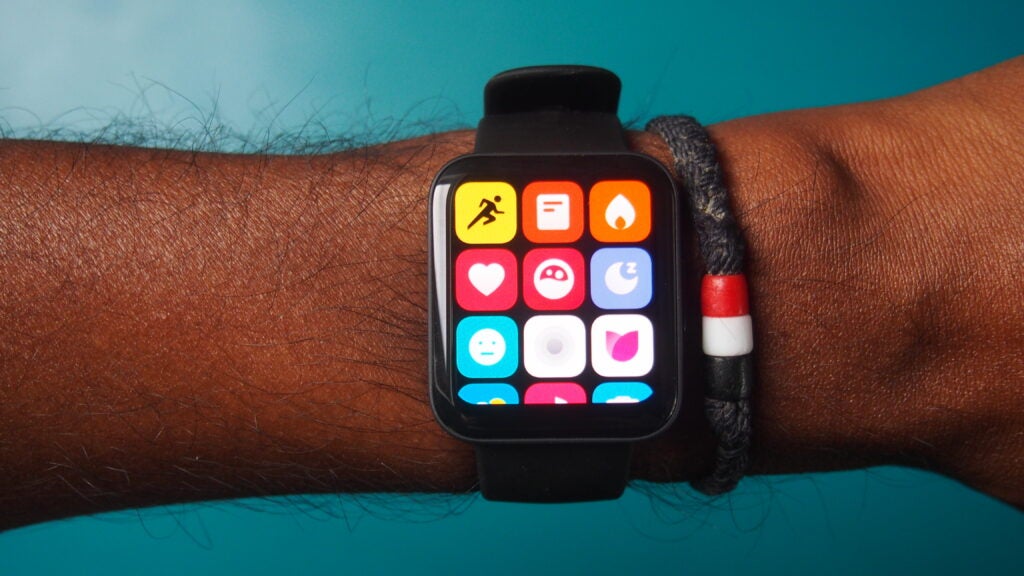
Design
- 39mm case
- 9.98mm thick
- Weighs 31g
- 1.6-inch AMOLED screen
- 5ATM water-resistance rating
If you like your smartwatch compact, then you’ll like the Poco Watch. Its 39mm case makes it smaller than the smallest-size Apple Watch Series 7. You won’t mistake it for an Apple Watch, mind; but it certainly isn’t a bad-looking smartwatch overall.
It’s pretty slim at 9.98mm thick and the TPU strap has proved comfortable to wear, day and night. It carries a 5ATM water-resistance rating, which means it can be worn in the shower and it comes with support for tracking pool and open-water swimming, too.
I had the all-black version in for testing and while it looks like a fair number of square smartwatches on the market that take inspiration from Apple’s Watch, it certainly doesn’t feel cheap or tacky in any way, despite lacking high-grade case materials.
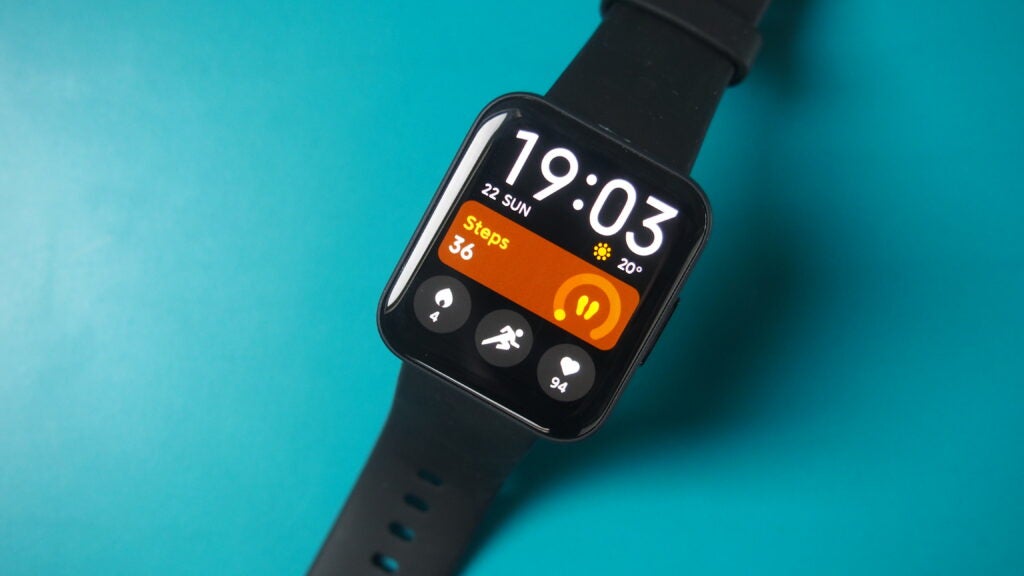
That’s largely in part to Poco’s choice of display. It’s a 1.6-inch, 320 x 360 resolution AMOLED touchscreen panel, which is flanked by a single physical button. It’s a bright, colourful screen that’s responsive to touch and can stay on 24/7.
Around the back is where you’ll find the optical sensors to track heart rate and blood oxygen, and there’s a small set of magnetic charging points onto which you can clip on the proprietary charging cable.
Overall, then, the Poco Watch presents a neat and tidy look that will definitely appeal to more slender wrists, or those who prefer their smartwatches more understated.

Tracking and Features
- Tracks 100+ sports
- Built-in GPS
- Tracks blood oxygen levels
- 24/7 heart rate monitoring
- Sleep and stress tracking
- View smartphone notifications
Poco aims to offer a generally well-rounded smartwatch experience, delivering mostly familiar features rather than anything new.
This comprises functioning as a fitness tracker, a pretty basic smartwatch and playing sports watch, too. In terms of what it delivers on those fronts, it doesn’t do a bad job, but there’s certainly room for improvement – and areas in which it does make compromises.
I’ll start by saying that Poco uses its own watch software, but it works with both Android and iOS devices. Over the course of the testing period, I had paired the Poco Watch with a Samsung Android phone – and, in general, the experience was strong. I encountered the odd syncing niggle, but setup and using the watch was all very straightforward.
If we start with the good, the Poco Watch’s abilities as a fitness tracker are excellent. I found step counts were largely in line with the numbers attained with the Oura Ring 3 and Garmin’s Epix watch. Plus, there’s a nice activity tracking screen and watch face to keep an eye on progress.
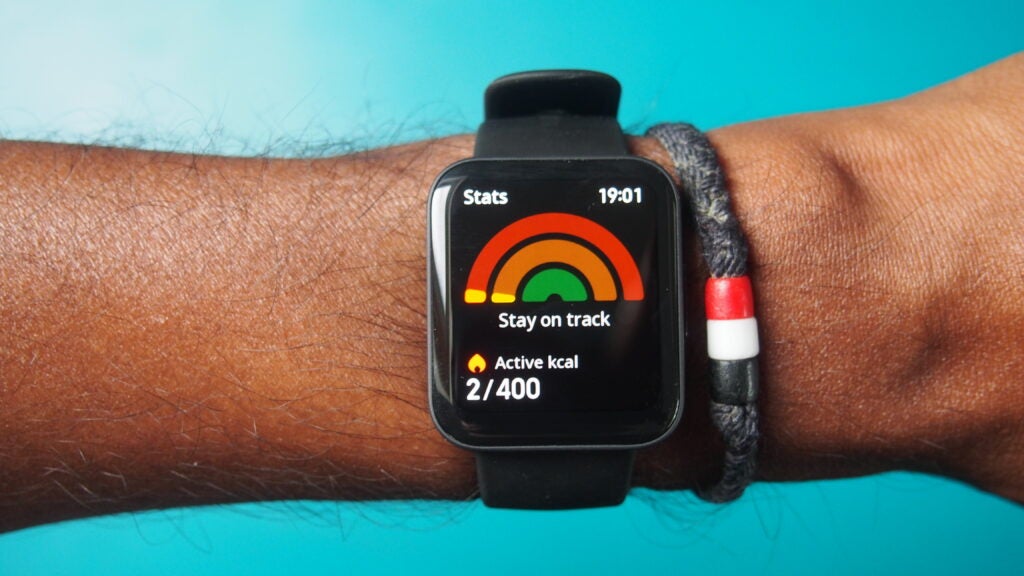
For tracking sleep, first and foremost, the Poco Watch proved comfortable to wear through the night. As for the data, you’ll see a breakdown of sleep stages, and you can enable heart rate and blood oxygen measurements from the companion app. Used alongside the Oura Ring 3 and Garmin Epix, I found the Poco Watch captured similar sleep duration data and sleep stage breakdowns with those two reliable sleep trackers.
It fairs pretty well for sports tracking, too, with many of the 100+ fitness modes offering more than just basic workout duration and heart rate stats. Plus, you can connect the device to Strava, too.
Core activities such as running, cycling and swimming offer the richest metrics, and Poco does support GPS, GLONASS, Galileo and BeiDou satellite systems to promise accurate outdoor activity tracking. It couldn’t quite match the accuracy of the multiband support delivered by Garmin’s Epix watch, but I think if you’re using the Poco device for casual runs and rides, you’ll be largely satisfied with the performance.
Where things aren’t so great is with heart rate tracking. The optical sensor onboard can monitor heart rate continuously, during exercise and also powers features such as stress tracking, with such monitoring usually where cheaper smartwatches can come up short. Whether it was continuous tracking, on-the-spot readings or tracking heart rate during high-intensity exercise, the Poco Watch’s heart rate data was either strangely low or excessively high compared to readings from a heart rate monitor chest strap and reliable continuous HR readings from the Garmin and Oura devices.
Step away from all things health and fitness, and Poco serves up a small but useful array of smartwatch skills. It can display native and third-party notifications; you just can’t respond to them. There’s no music player, but you can control music playing on your phone, and it worked seamlessly when I booted up Spotify for some accompanying music to my workout. I welcome the way weather forecasts are displayed, and there are some tidy watch faces from which to choose here, too.
If you keep your expectations in check, the Poco Watch performs fine as a basic smartwatch.
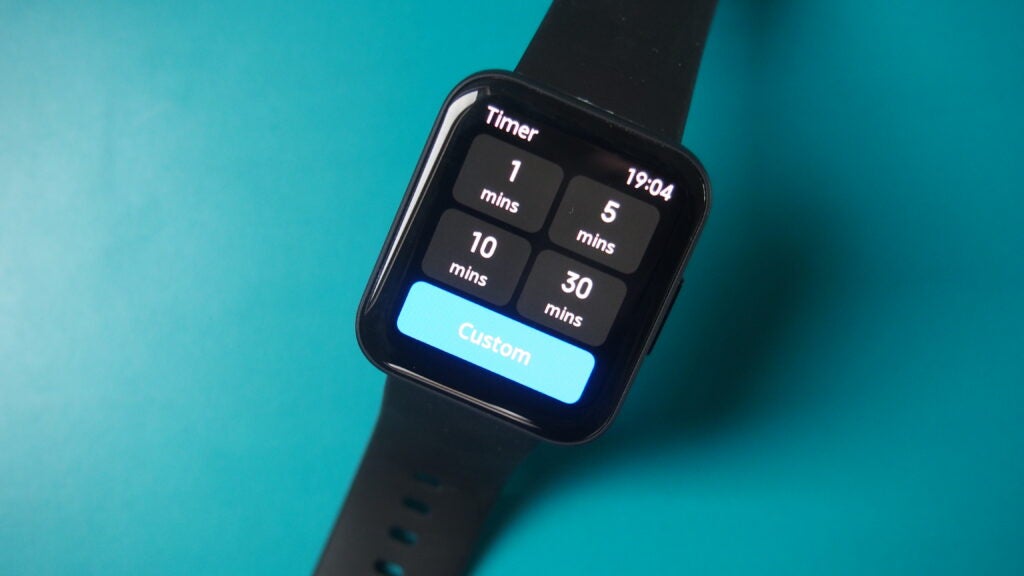
Battery Life
- Up to 14 days of battery life in typical use
- Battery life drops with advanced features enabled
Battery life here follows a similar story to the Xiaomi and Redmi smartwatches. Yes, it is possible to reach the touted maximum battery life, but the reality is that if you want to make good use of all features available, as well as more insightful data, then the Poco Watch will fall short of the 14 days stated.
Like Xiaomi, Poco does let you know which features will consume the most battery life. These include the always-on display mode, advanced sleep monitoring including tracking heart rate and blood oxygen, and increasing the rate of sampling heart rate data. If you’re tracking a lot of outdoor exercise, this will likely have an impact, too.
In heavy use, I found the Poco Watch was able to make it through 5–7 days. While this isn’t a disaster, the difference between typical use and heavy use is marked.
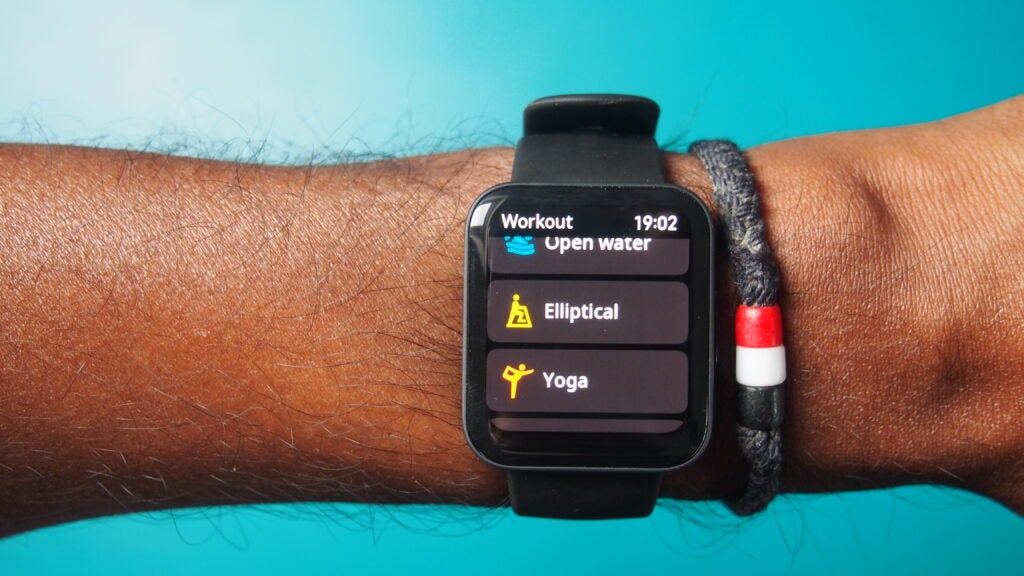
Latest deals
Should you buy it?
You want a cheap smartwatch with a good screen While Poco hasn’t firmed up pricing, the Poco Watch is likely to be an affordable option, offering pretty strong value with the features, design and display it delivers.
You care about tracking your heart rate The Poco Watch’s optical heart rate sensor isn’t really up to the task of delivering the kind of heart rate data you can really rely upon.
Final Thoughts
The Poco Watch isn’t bringing big innovation to the smartwatch space, then, but by including that AMOLED screen it offers a feature for which you’d usually pay a premium. It can’t mask some clear performance and tracking issues, but cheap smartwatches are becoming more likeable – and the Poco Watch definitely fits into that category.
How we test
We thoroughly test every smartwatch we review. We use industry standard testing to compare features properly and we use the watch as our main device over the review period. We’ll always tell you what we find and we never, ever, accept money to review a product.
Worn as our main smartwatch during the testing period
Heart rate data compared against dedicated heart rate devices
Side-by-side GPS comparison with our best scoring smartwatches
FAQs
The Poco Watch comes with a 5ATM water-resistance rating, which makes it suitable for use while swimming and in the shower. It can handle being submerged in water up to 50 metres in depth.
Yes, the Poco Watch includes its own GPS sensor and additionally supports three of the other big satellite systems to track outdoor exercise and activity.




